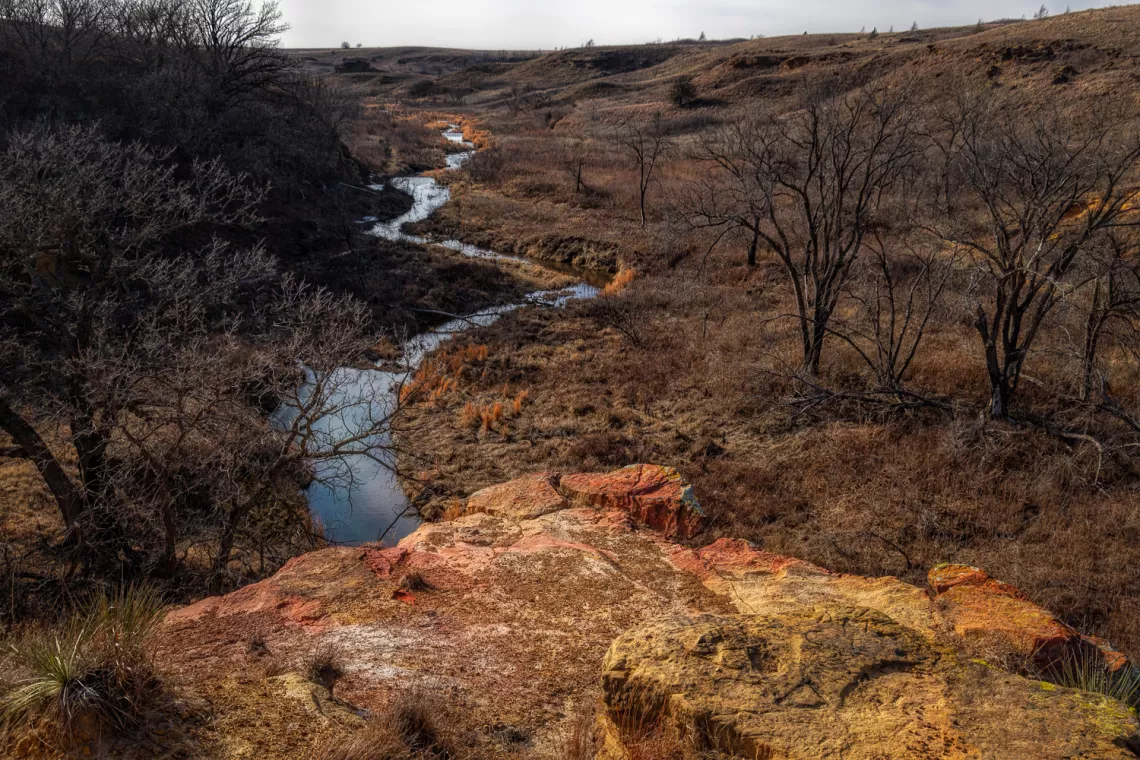
This view along the Kanopolis Hiking Trail in Ellsworth County shows exposures of the reddish brown sandstones of the early Cretaceous Kiowa Formation. The Kiowa records nearshore environments at a time when the mid-continent was just being flooded after a long period of exposure and erosion as land. The Kiowa in this area is also notable for the presence of “barite roses” formed as barite crystals grew within the sandstone.
By Elaine Giessel
The groundhog, also known as woodchuck, is commonly found to the east of a line extending through Manhattan southwest to Arkansas City. Woodchuck populations seem to be increasing and extending their range further west in Kansas. (Source material: K-State Extension Wildlife Management)
Woodchucks live in eastern Kansas on dry soils at the edges of forests and brushy woodlands, or on rocky outcrops associated with forests and grasslands. They are often spotted along waterways with grassy banks and rocks for cover.
The woodchuck's scientific name is Marmota monax. Marmota is the Latin word for "marmot," the name given to close relatives of the woodchuck - the European or the North American marmot. Monax is an American Indian name for this rodent and means "the digger," a reference to the woodchuck's habit of excavating burrows.
The woodchuck has a compact, chunky body supported by relatively short, strong legs. Its tail is short and bristly. Its forefeet have long, curved claws that are adapted for digging ground burrows where it seeks refuge and hibernates during winter months. Its color is usually a grizzled brownish-gray, although fur color may vary from white to black. Woodchucks have chisel-like incisor teeth. From tip of nose to end of tail, woodchucks are approximately 20 to 27 inches long and weigh from 5 to 12 pounds.
The principal natural enemies of woodchucks are the red fox, coyote, bobcat, eagles large hawks and owls. Longevity of this rodent is from five to six years. Its burrow system is its defense; once lodged in it the woodchuck is almost impossible to dislodge. It will grind its teeth, fight ferociously, and call in a high-pitched squeal.
--